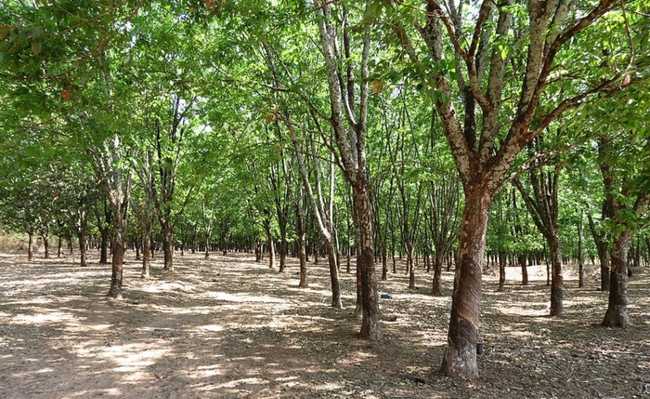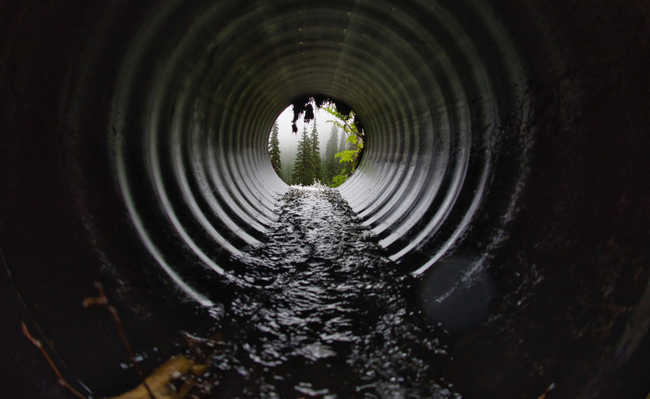Spirulina: what is it and what is it for
Do you know what spirulina is? Meet this edible cyanobacterium loaded with antioxidants

Spirulina or spirulina is a cyanobacterium (and not an alga, as it was known worldwide) used for millennia by mankind, due to its high concentration of nutrients - it is one of the most complete natural supplements available in nature.
Algae or bacteria?
After all, is spirulina an alga or is it a bacteria? The answer: neither. She is a cyanobacterium.
Cyanobacteria is a phylum belonging to the domain Bacterium. In it, there are organisms that cannot be called either bacteria or algae, as they are neither: they are just cyanobacteria. The confusion about spirulina is because it is popularly known as alga. Remember that algae grow in a marine environment, and spirulina is grown in fresh water.
Another key difference lies in cell division: cyanobacteria are prokaryotic, while most algae are eukaryotic or eukaryotic.
The absence or presence of caryotheca or caryomembrane (the wall that isolates the cell nucleus, where the DNA is found) is what differentiates the two classifications: eukaryotes have a caryotheca, prokaryotes do not. They also lack mitochondria, plastids, Golgi complex, endoplasmic reticulum, and all those exotic terms you were forced to memorize for biology tests.
But calm down, the confusion is based on ancient studies, which classified spirulina as algae (cyanophycea), yes.
It has characteristics of plant cells (presence of chlorophyll, photosynthesis, cell wall with cellulose) and bacteria (nuclear material dispersed in the cytoplasm).
But scholars have noticed the lack of kinship between this cute little one and eukaryotic algae, which are like that more sophisticated cousin, always traveling abroad, that everyone has. Therefore, spirulina has returned to its role as a bacteria, which does not alter its nutritional benefits in any way.
What is it and where does it come from?
With a spiral shape (hence the name), it belongs to a group of 1,500 species of microscopic aquatic plants that grow in tropical and subtropical lakes, unlike algae, which are usually marine.
The waters of these lakes need to have a high pH (alkaline, from 7 to 8), in addition to the presence of carbonate and bicarbonate; it develops fully in rivers and lakes with a pH between 10 and 11, and in Brazil, for example, the ideal environment is the Pantanal.
The most commercialized variations are the Arthrospira maxima (Central America) and the Arthrospira platensis (Africa, Asia and South America); they are photosynthetic bacteria, called floating filamentous cyanobacteria, and they usually live in algae-like colonies, so the confusion continues to this day. Another factor for such a misunderstanding is that these bacteria, currently of the genus arthrospira, have already been officially classified as of the genus Spirulina .
Its bluish color comes from phycocyanins; chlorophyllin gives a green color; carotenoids give orange pigmentation. The Aztecs added spirulina to their meals, just as some North African populations do for food supplementation. Spirulina was introduced and popularized in western food around 1980.
Composition and benefits
In its composition, even with differences from study to study, there is at least 60% of proteins - it reaches 95% in the conception of others - both being great numbers in terms of nutrition. It contains all the essential amino acids, plus vitamins, phytonutrients, minerals, vitamin B12, antioxidant beta-carotene (which can be converted to vitamin A), gammalinoleic acid, iron and chlorophyll.
Phytonutrients are those that act on the immune system; they are energy donors, prevent strokes, help menstrual symptoms and detoxify the body.
Phenylalanine (an amino acid necessary in the formation of all proteins in the human body) gives obese people satiety, helping them to lose weight and not presenting the risk of nutritional losses. Those who suffer from ailments in the digestive tract also benefit, as phenylalanine is rich in fiber and has the effect of absorbing water and "bloating" in the stomach. Substances such as guar gum and glucomannan (two dietary fibers) also have this property.
Linolenic acid is an essential fatty acid (present in cells and vital for good health), meaning the body needs it but does not produce it - it needs to be introduced into the diet. From it, gamma-linolenic acid (AGL) is made, which, in turn, creates the hormone prostaglandin E1 (PGE1). It prevents heart attacks and strokes, lowers cholesterol production and improves circulation.
FFA also relieves symptoms of premenstrual tension and can be found not only in spirulina, but also in jabuticaba, evening primrose and borage seed oil - but the highest concentration is in spirulina: five grams contain 50 milligrams of the substance . After breast milk, it is the best source.
For athletes, the high protein concentration (20 times higher than that of soy and 200 times that of beef) with the absence of fat or carbohydrates makes it an excellent ally in improving physical performance. While most animal proteins contain fats, calories and cholesterol, spirulina contains only 5% fat and each gram has less than four calories.
Production
Its cultivation is done in artificial ponds in a format that resembles formula 1 circuit tracks (raceway pond, in English) with rotating paddles that keep the water circulating. The biggest producers in the world are the United States, Thailand, India, Taiwan, China and Greece. It can come in tablet, flake or powder form. In addition to humans, it supplements poultry, aquaculture and aquariums.
According to a study (Amha Belay, 2002), spirulina has great anticancer, antiviral and cholesterol-lowering potential.
In August 2012, with a new emphasis on the commercialization of Hawaiian spirulina (peaceful arthrospira), came back to the prominence of the supplement on the shelves, mainly because of the ban on some weight-loss drugs. This variation comes from the Kona region, in Hawaii, and is considered purer, free from contaminants from ship hull paints, and heavy metals such as mercury and lead, which are highly harmful to health - but its composition is the same as that of spirulinas " normal".
And if you think of this type of aquatic creature as useful only for supplements, be aware that, just like land plants, there are countless species, some lethal and some miraculous. Of the more than 30,000 species of "algae", the blue-green ones (such as spirulina) are the most primitive.
They do not have a nucleus and their proteins are easily digested and assimilated; while other algae and bacteria have very indigestible cellulose walls, the cell lining of this algae consists of mucopolysaccharides (large molecules made up of sugars and protein), which facilitate absorption - this is an essential factor for the organism of convalescent, malnourished and elderly.
There are cultivation farms here in Brazil, in the semi-arid region of northeastern Paraíba, made in tanks with a capacity of up to 15 thousand liters of water. The low cost, the high temperatures in the region, strong insolation rates and the saline water in the subsoil collaborate for the cyanobacterium to flourish.
Bacteria were responsible for transforming, billions of years ago, the planet's atmosphere from rich in carbon dioxide to full of oxygen, thus enabling other forms of life to evolve. The BBC documentary "How to Grow a Planet" explains this process. Below, we provide some excerpts. Geologist Iain Stewart presents several other BBC documentaries on geology, biology and themes for those passionate about the complexity of our planet:
Vegan, don't be fooled
Although spirulina has a large amount of vitamin B12, its type of B12 is not used by the human body. The vitamin B12 in spirulina "steals" the place of the "real" vitamin B12 and can even fool lab tests. So if you are a vegan or strict vegetarian, be aware of this issue.










